TOMÁS SARACENO – IN ORBIT – DÜSSELDORF
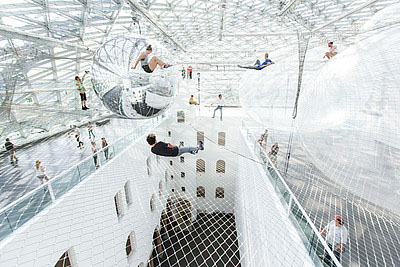
Tomás Saraceno – in orbit
K21 STÄNDEHAUS
Press conference: 19 June 2013, 11 AM
Opening: 21 June 2013, 7 PM
Exhibition dates: from 22 June, 2013
Curators: Marion Ackermann and Susanne Meyer-Büser
Technical supervision: Bernd Schliephake
STIFTUNG
KUNSTSAMMLUNG
NORDRHEIN-WESTFALEN
Grabbeplatz 5 – D-40213 Düsseldorf
www.kunstsammlung.de
A gigantic installation work by Tomás Saraceno, entitled “in orbit,” has been assembled in the Kunstsammlung Nordrhein-Westfalen. At a height of more than 20 meters above the piazza of the K21 Ständehaus, Saraceno has suspended a net construction within which visitors can move, apparently weightlessly. This highly contemporary safety net, which covers altogether 2500 m², spreads itself out across three levels below the massive glass cupola of the K21. The levels are held apart from one another by a series of “spheres,” airfilled PVC balls measuring up to 8.5 meters in diameter.
“To describe the work means to describe the people who use it – and their emotions,” explains Tomás Saraceno concerning his largest installation to date, planned over the past three years in collaboration with engineers, architects, and arachnologists – experts on spiders and spider webs.
Saraceno’s net construction, which is accessible on three levels, resembles a cloud landscape: those bold enough to clamber high into the web set beneath the glass cupola perceive the museum visitors far below them from the lofty heights as tiny figures in a
model world. Viewed from below or from intermediate levels of the Ständehaus, and against the background of the glass cupola, conversely, the people enmeshed in this net seem to be swimming in the sky. For the artist, this floating space becomes an oscillating network of relationships, neural pathways, resonances, and synchronous communication – a new digital geography, one that is experienced in physical terms.
The various materials underscore Saraceno’s basic ideas of flow and lightness: “When I look at the multilayered levels of diaphanous lines and spheres, I am reminded of models of the universe that depict the forces of gravity and planetary bodies. For me, the work visualizes the space-time continuum, the three-dimensional web of a spider, the ramifications of tissue in the brain, dark matter, or the structure of the universe. With ‘in orbit,’ proportions enter into new relationships; human bodies become planets, molecules, or social black holes.”
“in orbit” is one of the lightest projects realized by the artist to date: the work summons associations with the fineness and the stability of spider’s webs and soap bubbles – despite the fact that the net structure alone weighs 3000 kg, and the largest of the “spheres” weighs 300 kg. The conjunction of functionality, beauty, and strength that Saraceno has encountered during years of studying the web constructions of various spider species is also in evidence in the details of “in orbit.”
The precise observation of nature and the conceptual development of its phenomena are consistent trademarks of Saraceno’s work, which dissolves the boundaries between art and science. In this installation, space is perceived through vibration – just as it is by spiders. The result is a new, hybrid form of communication.
Says the artist: “Each individual strand not only holds visitors in place, but weaves them into itself, at the same time allowing them to act. It is like an outstretched network with an open character. An open, cosmic, woven structure that becomes densified, ramified, before flowing out into lines again at its edges. The web is singular in its relationship to the existing architecture.”
“With his daring projects, which transgressed conventional boundaries, Saraceno uses art not just to illustrate the discoveries of science; he goes beyond this to spur science onward,” explains Marion Ackermann, Director of the Kunstsammlung. Thanks to Saraceno’s initiative, not least of all, it becomes possible to “generate analogies between investigation of the structures of spider webs and the birth of the universe.” In an artist’s room set up by Saraceno at the K21, living spiders weave their webs, thereby providing insight into the natural-scientific background of this artist’s activities.
By virtue of its scale and radicality, “in orbit” is unprecedented within Saraceno’s oeuvre.
Exhibition curator Susanne Meyer-Büser describes the large-scale installation, developed with precision for the museum’s cupola, as follows: “Rarely does a work of art implicate the beholder so directly in emotional terms.” Even visitors who do not wish to enter a net structure that is suspended above an abyss “will inevitably be engaged by the themes of flight, falling, and floating, and will inevitably be gripped by archetypal fears and joys associated with them.”
With his Düsseldorf project, Saraceno – who studied both art and architecture – also zeroes in directly onto the concrete individual, as well as collective human experiences: museum visitors who climb up into the net, high above ground level, confront new dimensions of (self) perception through a personal and defining experience. Unavoidably, this involves social aspects as well: the presence of multiple visitors sets the daring construction into motion, altering its state of tension and external form – users must coordinate their movements in order to move optimally throughout the net configuration.
This artist-architect has frequently compared his creations to living organisms. Changes in the environment trigger thought processes; Saraceno is interested in the way in which “spaces and people generate new ideas.”
With his largest and most technically complex work to date, the 40-year-old artist goes beyond the achievements of his Cloud Cities in Hamburger Bahnhof in Berlin and his roof project for the Metropolitan Museum in New York City. The ambitious Düsseldorf installation represents a new and decisive step in the realization of his social and utopian project of a floating Air-Port-City.
In the tradition of Jules Verne and the American architecture and visionary Richard Buckminster Fuller, Saraceno regards his cloud city as a sophisticated response to hopes for the collective development of a utopian dream. Physical and digital realities must be conjoined if we are to achieve new levels of social and political participation. For the artist, this approach points toward solutions to the growing uninhabitability of the Earth, to dramatic global population growth, and to growing ecological challenges.
For their own safety, visitors to “in orbit” will receive instructions on the use of the installation from the staff of the Kunstsammlung Nordrhein-Westfalen. No more than 10 individuals may be present in the net structure at any one time. Stable shoes (with grip soles), the use of the overalls provided by the museum, and a minimum age of 12 are requirements for active
interaction with the installation.
Suported by: Schwarzkopf (Henkel Beauty Care).
Tomás Saraceno, born in 1973 in Argentina, studied art and architecture. Currently he lives and works in Berlin. His recent international exhibitions include: “Roof Garden Installation”, Metropolitan Museum of Art, New York (2012); “On space time foam”, HangarBicocca, Milan (2012-2013); „Cloud Cities“, Hamburger Bahnhof – Museum für Gegenwart, Berlin (2011- 2012). Selected group exhibitions with the artist’s participation: “20 Jahre Gegenwart”, MMK Museum für Moderne Kunst Frankfurt (2011); Installation at the Italian Pavilion at the 53rd Venice Biennial, Venice (2009). Saraceno’s continuous research of spider-web structures has been presented in solo exhibitions “14 billions (working title)” at Bonniers Konsthall, Stockholm and Kunsthalle, Helsinki (2010).

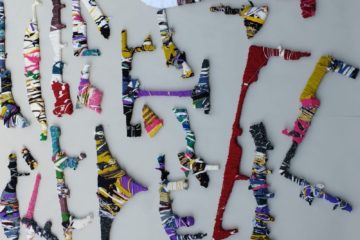
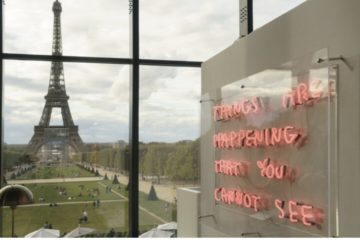
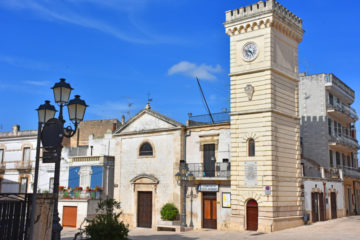
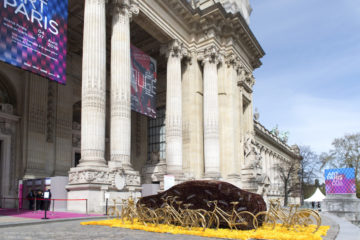

No Comment